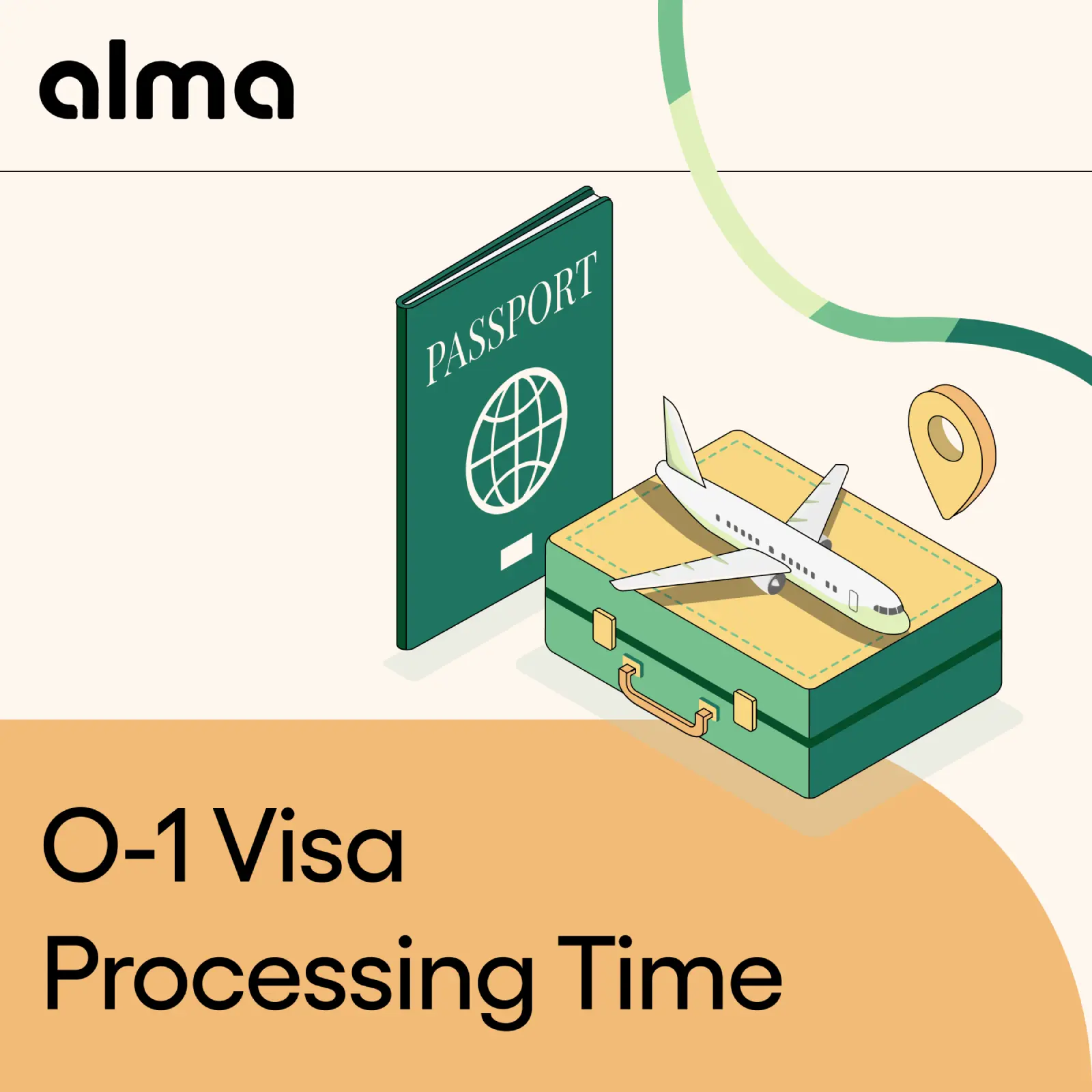- USCIS faces historic 11.3 million case backlog - Despite processing nearly 11 million cases in 2024, the backlog reached unprecedented levels with 18% drop in completions compared to previous periods
- I-130 spouse petitions take 14 months on average - Current I-130 processing times for immediate relatives through consular processing extend well over a year, making strategic filing essential
- Premium processing guarantees 15-day turnaround for $2,805 - While fees increased from $2,500, premium processing remains the only guaranteed fast-track option for eligible employment-based petitions
- Green card renewals face 938% processing increase - Form I-90 processing jumped from less than a month to over 8 months, affecting millions of permanent residents
- Naturalization times improved 50% to 5 months - While most categories face delays, citizenship processing reduced from 10.5 months to as little as 5 months
Comprehensive analysis of USCIS processing data, service center metrics, and priority date movements from official government sources
Current USCIS Processing Times by Service Center (2025)
- USCIS completed 10 million cases but faces 11.3 million pending applications. Despite processing 10 million cases in 2024, USCIS confronts a historic backlog of 11.3 million pending applications as of Q2 2025. This overwhelming caseload creates bottlenecks across all service centers, with processing completions dropping 18% compared to the same period in 2024. The backlog affects every application type, from work visas to family petitions.
- Processing completions dropped 18% compared to 2024 levels. USCIS data reveals a significant slowdown with 18% fewer completions year-over-year, exacerbating wait times across all categories. This decline occurs despite increased staffing efforts and technology investments. Companies using Alma's business immigration platform bypass these delays through guaranteed 2-week document preparation and real-time case tracking that keeps applications moving efficiently.
I-130 Processing Time for Spouse: 2025 Timeline Breakdown
- I-130 spouse petitions currently take 14 months through consular processing. Immigration petitions for spouses face extended waits with 14-month processing times for immediate relatives pursuing consular processing. This timeline represents just the USCIS portion, with additional months required for National Visa Center processing and embassy interviews. The lengthy separation impacts families planning reunification, making accurate timeline expectations crucial for life planning decisions.
- Family-based green card approval rates hover around 90%. Despite long waits, family immigration maintains strong approval rates with approximately 90% of cases approved when properly documented. This high success rate emphasizes the importance of complete initial filings to avoid Request for Evidence (RFE) delays. Working with experienced immigration legal services ensures applications meet all requirements from the start.
Green Card Wait Time by Country: Priority Date Analysis
- Employment-based green cards show 90% approval rate with 119,028 approvals. USCIS approved 119,028 employment-based green cards out of 132,513 completed cases in FY 2024, demonstrating strong success rates for properly prepared applications. This 90% approval rate spans all employment categories from EB-1 extraordinary ability to EB-3 skilled workers. Alma's green card services maintain a 99%+ approval rate through meticulous case preparation.
- China, India, Mexico, and Philippines face longest per-country backlogs. Country-specific limits create disparate wait times, with nationals from these four countries experiencing the longest delays due to high demand. While most countries have current priority dates, these nations face years or decades of waiting in certain categories. Understanding country-specific timelines helps applicants choose optimal visa strategies.
USCIS Green Card Processing Time: Employment-Based Statistics
- PERM labor certifications average 497 days for Department of Labor approval. The foundation of many employment-based green cards, PERM applications now take approximately 497 days or over 16 months for DOL adjudication. This lengthy process precedes the I-140 petition and adjustment of status, adding years to the total green card timeline. Alma's PERM services at $8,000 include streamlined workflows designed to minimize processing delays.
- Green Card renewals jumped from 1 month to 8+ months processing. Permanent residents seeking renewal face dramatic delays with Form I-90 processing increasing 938% from less than a month to over 8 months. This affects travel plans and employment verification for millions of green card holders. The exponential increase highlights systemic processing challenges across USCIS operations.
How Accurate Are USCIS Processing Times: Reality vs. Estimates
USCIS Case Status Tracking: Understanding Your Timeline
- Administrative Appeals Office targets 6-month completion for reviews. When cases require appellate review, the AAO aims to complete adjudication within six months from receipt. This additional layer adds substantial time for denied cases seeking reconsideration. Professional legal representation becomes crucial during appeals to present compelling arguments efficiently.
Citizenship Application Processing Time Statistics
- Naturalization processing improved 50% from 10.5 to 5 months. In a rare bright spot, USCIS dramatically reduced citizenship processing from 10.5 months to as little as 5 months, effectively eliminating the naturalization backlog. This improvement came through dedicated resources and process optimization focused specifically on N-400 applications. The success demonstrates what's possible when USCIS prioritizes specific application types.
- USCIS naturalized 818,500 new citizens in fiscal year 2024. The agency welcomed 818,500 new citizens in FY 2024, a 7% decrease from the previous year despite processing improvements. This decline reflects various factors including application volume fluctuations and eligibility requirements. The naturalization success story stands in contrast to worsening delays in other immigration categories.
Premium Processing vs. Regular: Time Comparison Statistics
Premium processing offers the only guaranteed timeline in immigration, providing 15-day processing for eligible employment-based petitions. The service now costs $2,805 after inflation adjustment, up from $2,500, but remains invaluable for time-sensitive cases. This option applies to H-1B, L-1, O-1, and certain EB-1 petitions, though not all immigration benefits qualify.
Alma's O-1 visa services at $8,000 include premium processing coordination, combining expedited USCIS adjudication with their guaranteed 2-week document preparation. This dual-speed approach minimizes total processing time from case initiation to approval. For companies managing multiple cases, Alma's business platform provides bulk premium processing management with spend projection tools.
The stark difference between 15-day premium processing and multi-month regular processing makes the additional fee worthwhile for many applicants. Regular processing for the same petition types can extend 4-8 months or longer. Premium processing also accelerates RFE responses, maintaining the 15-day timeline even when additional evidence is requested.
Immigration Court and Asylum Backlogs
Beyond USCIS, immigration courts face their own overwhelming caseloads with 3,687,750 active cases as of 2025, though this represents a 1.6% decrease from December 2024. The affirmative asylum backlog exceeds 1.16 million cases for the first time ever, creating years-long waits for protection seekers. These parallel backlogs in different parts of the immigration system compound delays for many applicants.
Strategic Implications for Applicants
Understanding processing statistics helps applicants make informed decisions about timing, visa selection, and service providers. With 11.3 million backlog and growing, traditional filing approaches face unprecedented delays. Smart applicants leverage technology-enabled legal services that guarantee faster document preparation while navigating the complex federal processing landscape.
Alma's immigration platform addresses these challenges through:
- Guaranteed 2-week document turnaround versus months of traditional preparation
- Real-time case tracking beyond basic USCIS status checking
- Proactive compliance alerts preventing costly delays
- 99%+ approval rate through meticulous preparation
The data clearly shows that waiting for "normal" processing means accepting extraordinary delays. Premium processing, strategic visa selection, and professional legal representation become essential tools for managing immigration timelines in 2025's challenging environment.
Frequently Asked Questions
USCIS processing varies dramatically by application type, with the agency managing an 11.3 million case backlog as of Q2 2025. Simple work permit renewals might take 3-4 months, while employment-based green cards extend multiple years. Alma's legal services guarantee 2-week document preparation to minimize your portion of the timeline, though government processing remains subject to these delays.
Current I-130 processing for spouses takes approximately 14 months for immediate relatives pursuing consular processing. This represents only the USCIS petition phase, with additional months required for National Visa Center processing and embassy interviews. The total timeline from filing to green card often extends 18-24 months for immediate relatives.
China, India, Mexico, and the Philippines face the longest per-country backlogs due to annual country limits and high demand. Indian nationals in EB-2 and EB-3 categories face particularly extreme waits extending decades. NIW options through Alma offer current priority dates for qualified applicants from backlogged countries.
Yes, USCIS provides online case status checking through their website using your receipt number. However, status updates are limited and often delayed. Alma's platform offers enhanced tracking with proactive alerts, providing visibility beyond basic USCIS status messages to help you understand actual case progress and anticipate next steps.








